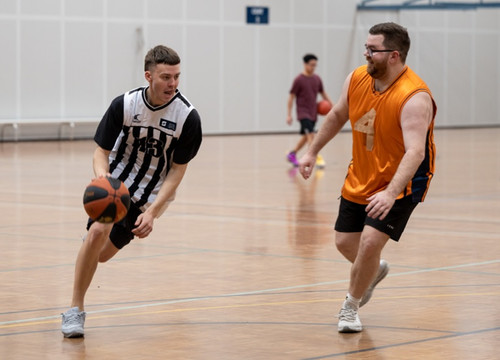What's it Like to Chafe Playing Basketball?
Posted by Jack Miller on 13th Sep 2022
All that fast action on the basketball court can lead to a range of unexpected problems, including unwanted chafing. Unfortunately, basketball players are particularly vulnerable to chafing, particularly if they play to a high standard. If you're a basketball player that suffers from chafing, read on to discover what causes it and what you can do to prevent this unpleasant condition.
What causes chafing?
Chafing is caused by repeatedly rubbing an area of skin, wearing away the skin layers through friction. Early signs of chafing include redness, soreness and an uneven skin tone. Prolonged chafing can lead to the top layer of skin (the epidermis) being removed completely, exposing the raw dermis beneath. At this stage of chafing, the area will weep and bleed, as well as be incredibly painful.
Once an area has become chafed, it's essential that it's treated correctly, or healing will be slow and the risk of infection increases.
Why are basketball players vulnerable
For basketball players, any repetitive movement that's performed thousands of times during a match is likely to cause chafing. This may include chafing on the inner thigh, due to running, chafing on the ribs, inner arm and armpit, due to repeatedly bouncing and throwing the ball, or chafing around the waist, neck or heel due to ill-fitting sportswear or footwear. The more active a basketball player is and the more repetitions of a movement they perform during a game, the higher the risk that chafing will occur.
Unfortunately, moisture aggravates chafing, as sweat increases friction. The harder a player plays, the more they sweat and the higher the likelihood of chafing becomes. This can be made worse if their sportswear is badly fitting or isn't breathable.
I'm a basketball player, how can I prevent chafing?
Although chafing is a risk for any sportsperson, due to the nature of the activity, there are a few useful anti chafing measures that can be taken to reduce the risk of rash.
Apply a barrier cream, such as vaseline or a proprietary lube to high-risk areas
Ensuring that the skin is protected, either using a barrier compound such as vaseline or through the use of thigh chafing bands is a good way to eliminate chafing risk.
Wear well-fitting sportswear and shoes
Kit that's too baggy or too tight can increase chafe risk. Make sure your sportswear is designed to protect your at-risk areas - it's worth training in several different outfits prior to a game, to check which one is most comfortable. The same goes for shoes - a good fit is vital.
Ensure sportswear is breathable
Breathable shorts and vests wick moisture away from the body, reducing the risk of sweat build-up.
Wash kit regularly
Grubby kit harbours bacteria, which can increase the risk of a chafed area becoming infected. A clean kit each time you train or play is the best option.
With appropriate protective measures, it's possible to eliminate the risk of chafing, enabling you to concentrate on winning the game! If you want more help with chafe control during basketball play, the team at No More Chafe is here to help.

